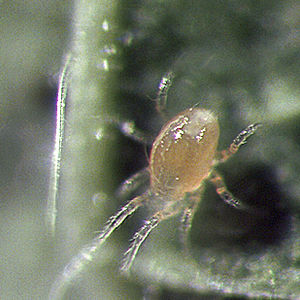
- Seeds and crop inputs
- Crop input
- Auxiliary insect
- Beneficial Insectary Inc

- Products
- Catalogs
- News & Trends
- Exhibitions
Against aphids wasp APHIDIUSforce™
Add to favorites
Compare this product
Characteristics
- Target
- against aphids
Description
Although APHIDIUSforce™ E is a vigorous parasite, which can attack many individual aphids, it will work best when used preventatively during periods when aphids are expected to arrive in the crop. This will ensure that at least some of the initial aphids colonizing the crop will be found and parasitised, so that colonies may grow slowly or be stopped entirely before they reach damaging levels. There will then be fewer large colonies and fewer aphids will develop as winged individuals to spread through the crop and form new infestation. This curative approach can be achieved using either regular low rate releases of between 1 per 100²ft and 5 per 100²ft/weekly, or by using cereal plants infested with an alternative aphid host which will not attack the principal crop. These ‘banker plants’ are popular with many growers, but they require horticultural care and may need repeated releases of cereal aphids to function correctly.
This curative approach may entirely avoid aphid outbreaks, but if not it will slow the development of colonies of aphids to allow the grower extra time in which to act. APHIDIUSforce™ E can also be released correctively directly onto existing colonies, but the rapid reproductive rate of aphids and the lag between parasitism by Aphidius spp. and death of the host may allow the population to grow beyond the level at which economic damage is caused. It may therefore be necessary to use some other biological agent such as Chrysoperla rufilabris, or a compatible chemical agent to reduce localized outbreaks to a manageable level before releasing Aphidius.
*Prices are pre-tax. They exclude delivery charges and customs duties and do not include additional charges for installation or activation options. Prices are indicative only and may vary by country, with changes to the cost of raw materials and exchange rates.





